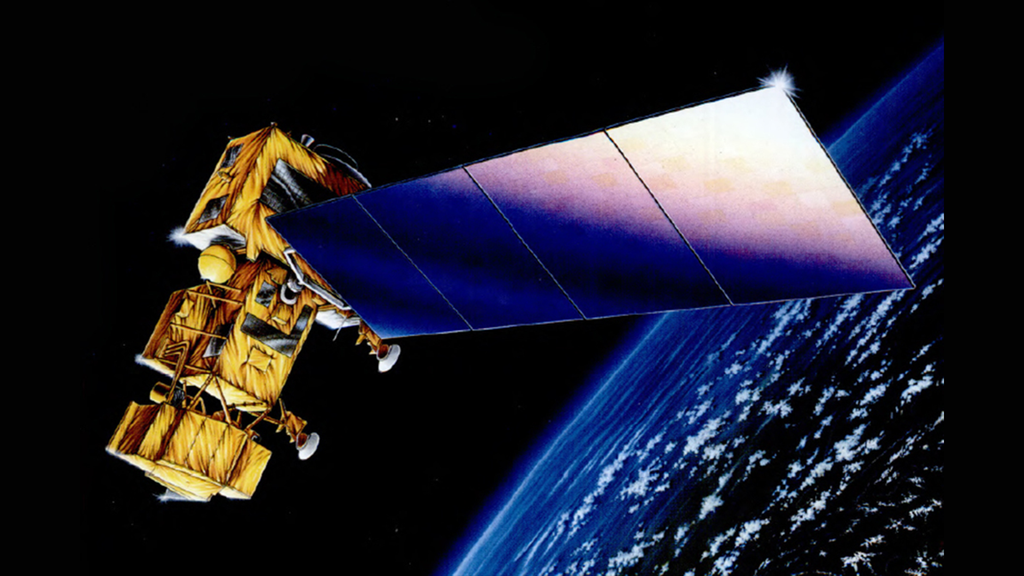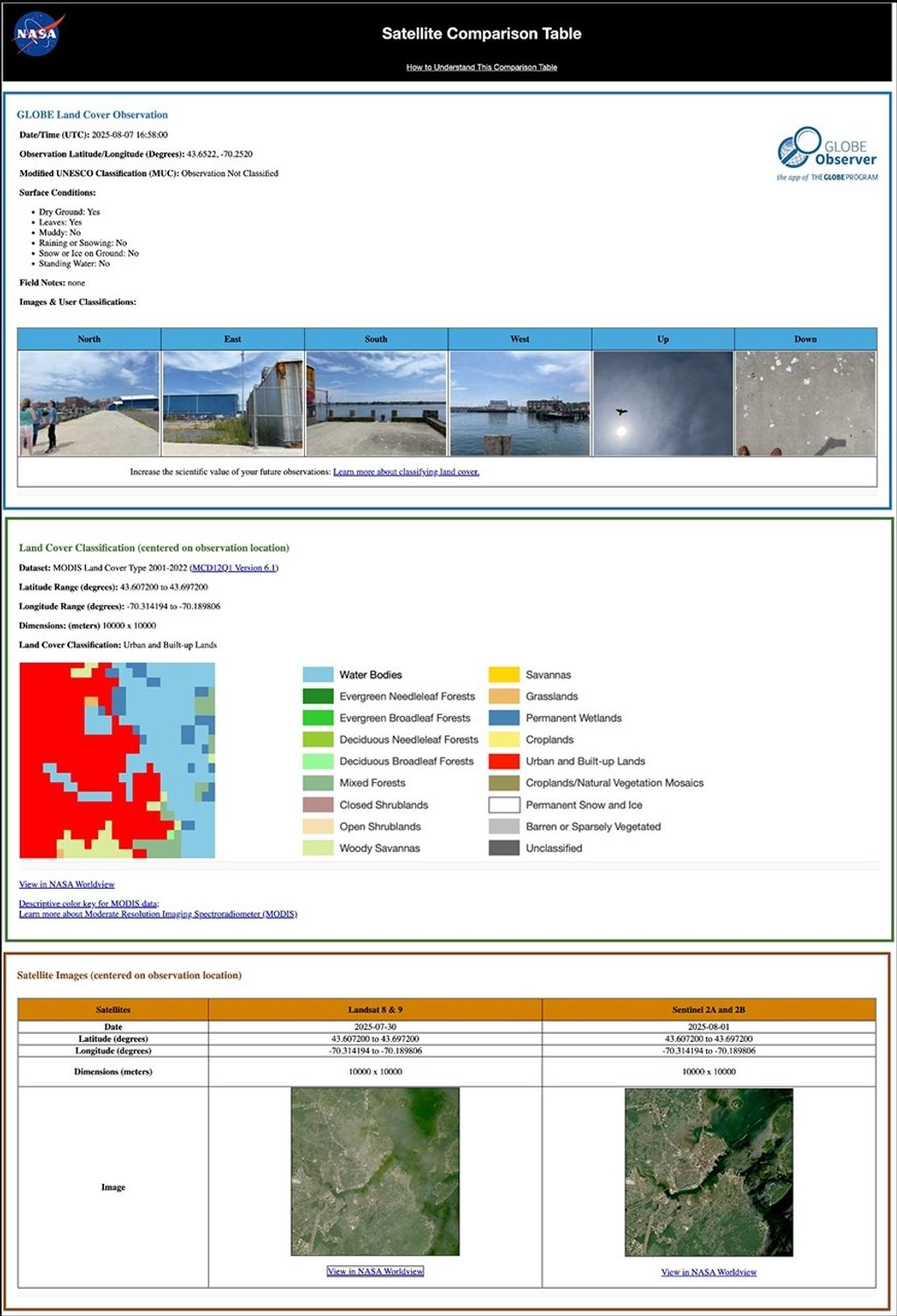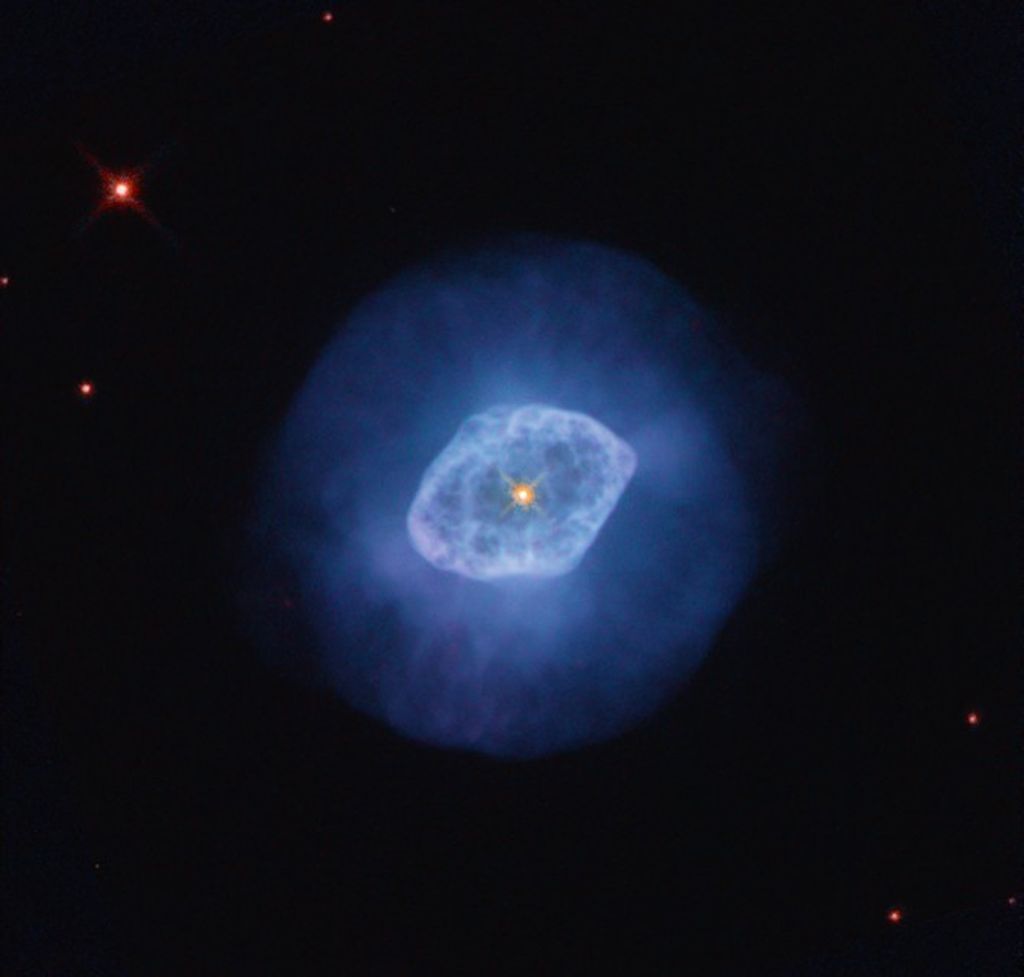1 min read
Compare Observations of Wolf-Rayet 140 (MIRI Images)

Watch dust move in space!
Compare the two mid-infrared images taken by the James Webb Space Telescope of Wolf-Rayet 140, a system of dust shells ejected by two massive stars that are in an elongated orbit.
Look to the top right of the first two images. Two triangles are matched up to show how much difference 14 months makes: The dust is racing away from the central stars at almost 1% the speed of light and no longer lines up in the third image.
When the winds of the massive stars, which are buried within the white central region in the first and second images, collide and that material compresses, it forms carbon-rich dust that moves away from the stars. This occurs for a few months during each eight-year orbit, which is one reason why the dust isn’t “sprayed” equally around the stars to form complete shells.
Wolf-Rayet 140 lies just over 5,000 light-years away in our Milky Way galaxy.
Watch the video to see the dust’s movement.
Extended Description and Image Alt Text
Extended Description
A three-part graphic. The left and center images show Wolf-Rayet 140. The left panel shows an observation from July 2022 and the center panel an observation from September 2023.
Both show a bright white point of light surrounded by 17 regularly spaced, hazy dust shells at the bottom, right, and upper right, which look like tree rings. There is noticeably less color in the upper left. The central point, where the two stars are located, has a rough hexagon shape.
At left and center, there are several blue diffraction spikes in both observations. There is a white outline of a small triangle overlaid in the same place toward the top right in both observations, which is completed as a square with a dotted line. This area is toward the top right, where the outer rings appear bright orange. In the left panel, the triangle points up and is labeled a. In the right panel, the triangle points down and is labeled b. When paired together, they form a perfect square. In both outlined boxes, there are six arced, fuzzy segments of dust rings.
The third panel at right shows a magnified version of the areas outlined in the left and center panels. There are two labels. At top left, a, and at bottom right, b. It is very obvious that the arced orange ring segments do not perfectly match in the middle where they are spliced together. The arcs at left appear lower, and the arcs at right all appear higher. Each arc lines up for about half its width.
Image Alt Text
A three-part graphic showing observations of Wolf-Rayet 140, two massive stars with 17 dust shells around them. An inset appears at right, showing a portion of the two observations matched up to show that the arced dust has moved.
About the Object
- R.A. PositionR.A. PositionRight ascension – analogous to longitude – is one component of an object's position.20:20:27.98
- Dec. PositionDec. PositionDeclination – analogous to latitude – is one component of an object's position.+43:51:16.28
- ConstellationConstellationOne of 88 recognized regions of the celestial sphere in which the object appears.Cygnus
- DistanceDistanceThe physical distance from Earth to the astronomical object. Distances within our solar system are usually measured in Astronomical Units (AU). Distances between stars are usually measured in light-years. Interstellar distances can also be measured in parsecs.5,600 light-years
About the Data
- Data DescriptionData DescriptionProposal: A description of the observations, their scientific justification, and the links to the data available in the science archive.
Science Team: The astronomers who planned the observations and analyzed the data. "PI" refers to the Principal Investigator. - InstrumentInstrumentThe science instrument used to produce the data.MIRI
- Exposure DatesExposure DatesThe date(s) that the telescope made its observations and the total exposure time.27 July 2022 and 9 September 2023
- FiltersFiltersThe camera filters that were used in the science observations.F770W, F1500W, F2100W
- Object NameObject NameA name or catalog number that astronomers use to identify an astronomical object.Wolf-Rayet 140; WR 140
- Object DescriptionObject DescriptionThe type of astronomical object.Wolf-Rayet Star
- Release DateJanuary 13, 2025
- Science ReleaseWebb Watches Carbon-Rich Dust Shells Form, Expand in Star System
- CreditImage: NASA, ESA, CSA, STScI; Science: Emma Lieb (University of Denver), Ryan Lau (NSF's NOIRLab), Jennifer Hoffman (University of Denver)
Downloads

These images are a composite of separate exposures acquired by the James Webb Space Telescope using the MIRI instrument. Several filters were used to sample different infraraed wavelength ranges. The color results from assigning different hues (colors) to each monochromatic (grayscale) image associated with an individual filter. In this case, the assigned colors are: Red: F2100W Green: F1500W Blue: F770W
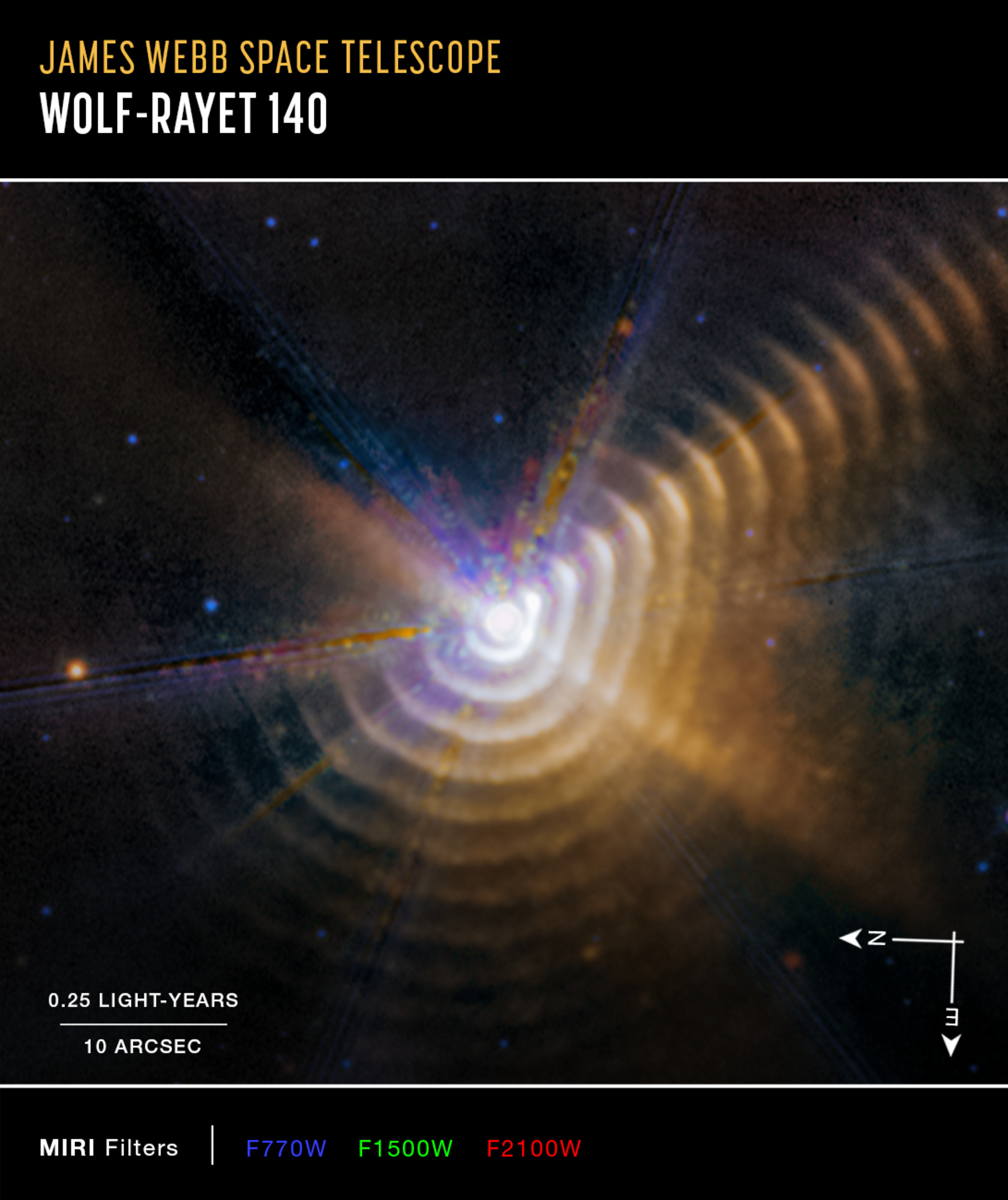
Related Images & Videos
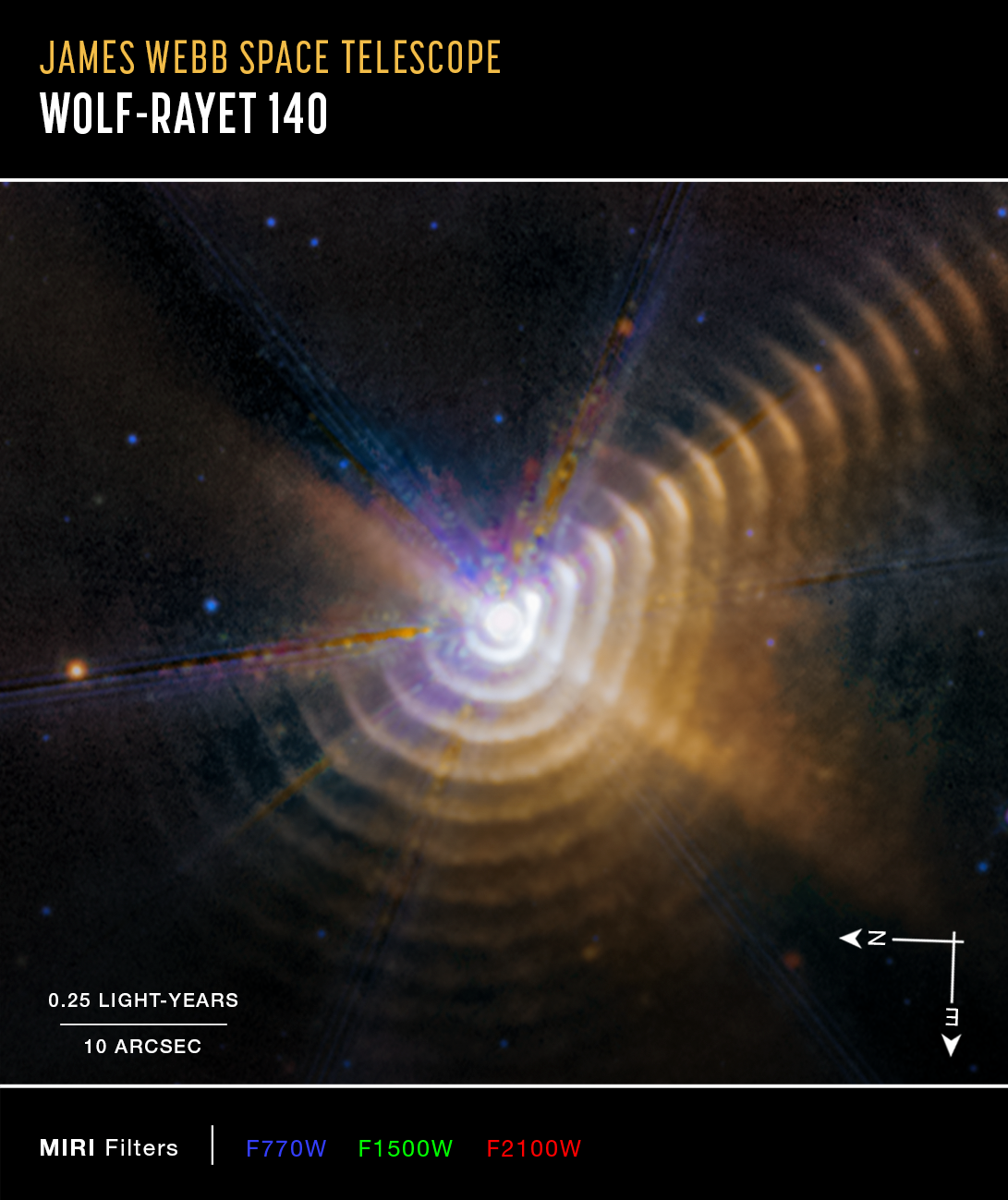
Wolf-Rayet 140 (MIRI Compass Image)
This 2023 image of Wolf-Rayet 140, a system of dust shells ejected by two massive stars at the center, was captured by the James Webb Space Telescope’s MIRI (Mid-Infrared Instrument). The image shows a scale bar, compass arrows, and color key for reference. The scale bar is...
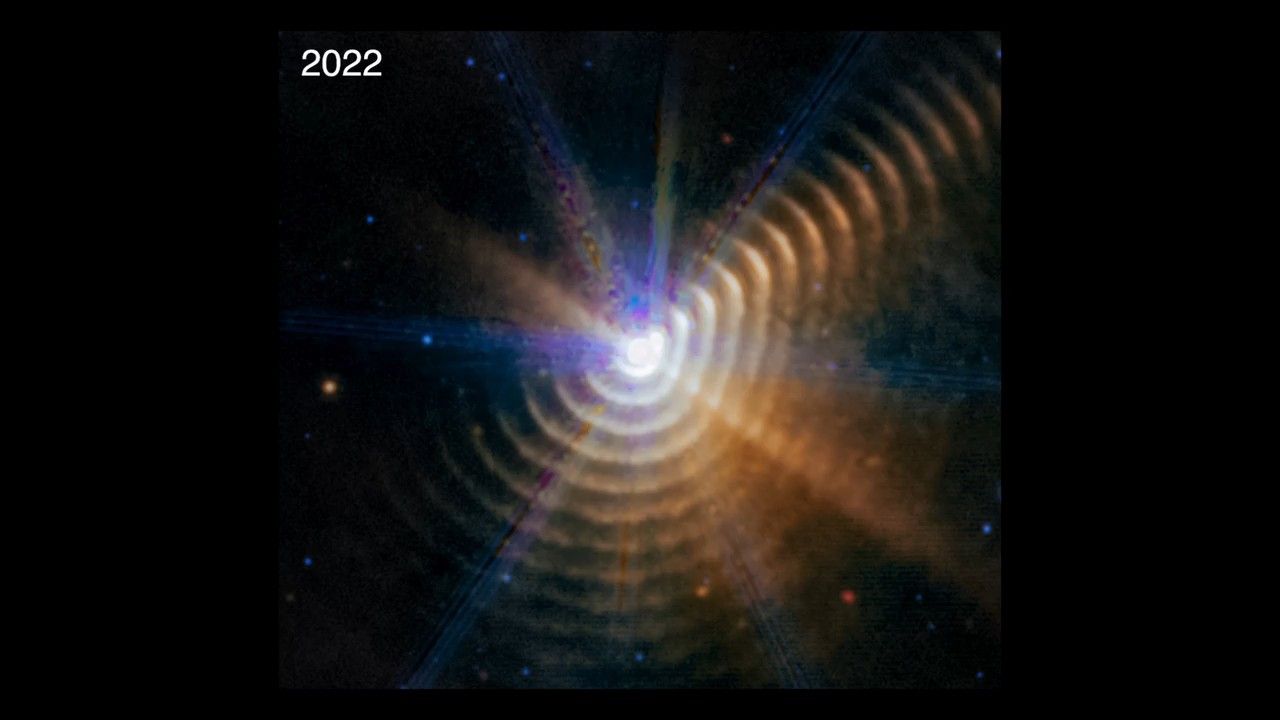
Fade Between 2022 and 2023 Observations of Wolf-Rayet 140
This video alternates between two James Webb Space Telescope observations of Wolf-Rayet 140, a two-star system that has sent out more than 17 shells of dust over 130 years. Mid-infrared light observations highlight them with excellent clarity. By comparing this pair of...
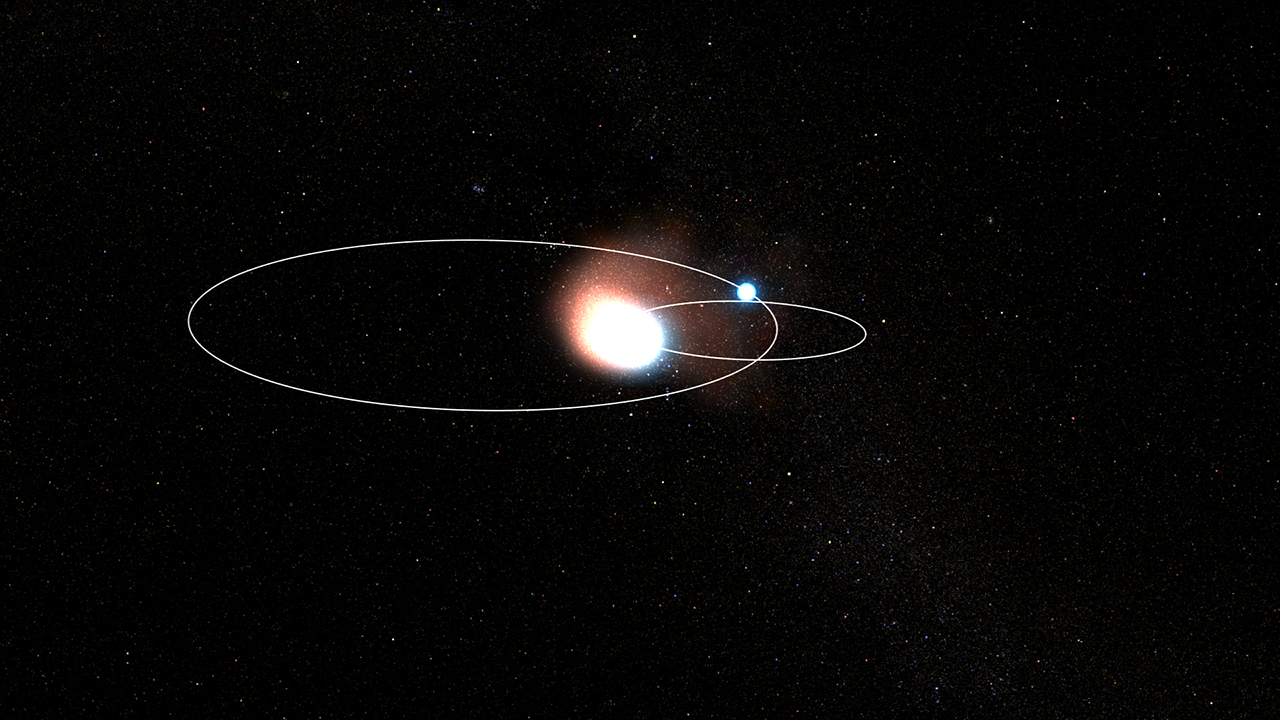
Stars’ Orbits in Wolf-Rayet 140 (Visualization)
When the two massive stars in Wolf-Rayet 140 swing past one another, their winds collide, material compresses, and carbon-rich dust forms. The stronger winds of the hotter Wolf-Rayet star blow behind its slightly cooler (but still hot) companion. The stars create dust for...
Share
Details
Laura Betz
NASA’s Goddard Space Flight Center
Greenbelt, Maryland
laura.e.betz@nasa.gov
NASA, ESA, CSA, STScI
Emma Lieb (University of Denver), Ryan Lau (NSF’s NOIRLab), Jennifer Hoffman (University of Denver)









